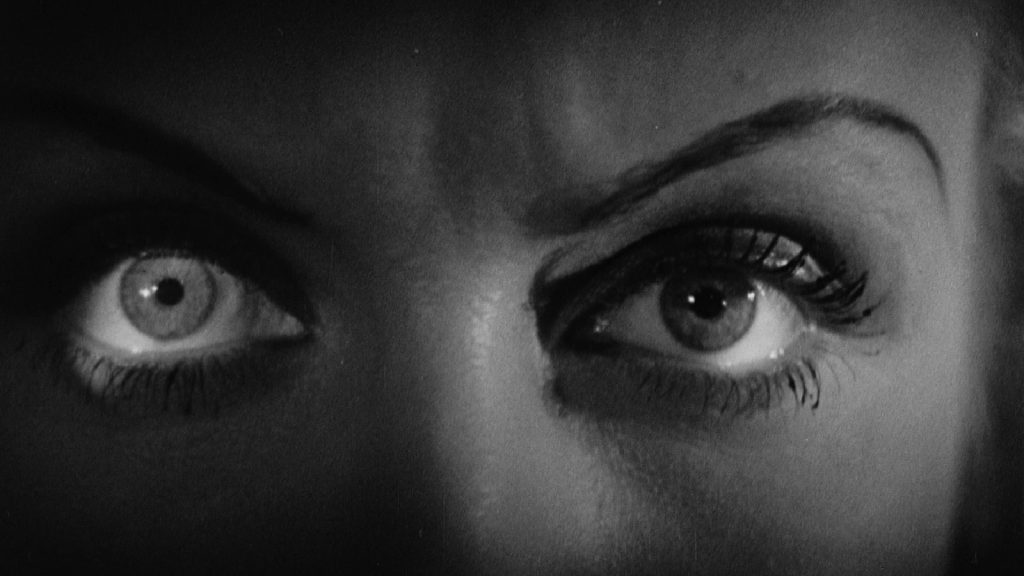
Item 1 on my list of demands to be met before returning to regular Mass on Sundays is the canonization of Ken Russell. In The Lair of the White Worm (1988), the whisky priest of excess directs a half-cracked, mercifully loose modern adaptation of Bram Stoker’s dull novel about a vampiric English noblewoman looking to sacrifice her working-class neighbors to a pagan snake god. The American VHS success of Russell’s frantic chamber piece Gothic (1987) led to a three-picture deal with Vestron Pictures, and the immediate result was Salome’s Last Dance (1988), an undervalued feast of puns and extravagant set design based on Oscar Wilde’s stage play. This was followed by The Lair of the White Worm, a horror-comedy that fuses elements of the previous two films into a surreal mix of dark, profane visions and Wildean double entendres.
While excavating the site of an old convent in Derbyshire—now a bed-and-breakfast owned by sisters Mary and Eve (Sammi Davis and Catherine Oxenberg)—young archeologist Angus (Peter Capaldi) unearths a monstrous skull that may be connected to the local legend of the D’Ampton Worm, a serpent-like monster said to have once terrorized the countryside. The three of them team up—in a configuration familiar from Dracula—with Lord James D’Ampton (Hugh Grant), purported scion of the original serpent slayer, to investigate the recent disappearance of the sisters’ parents. They soon run up against Lady Sylvia Marsh, a pagan priestess with a grudge against the Christian god who unseated her beloved snake god Dionin. And they don’t stand a chance because Lady Sylvia is played by Amanda Donohoe, whose wicked humor and sexy, malevolent presence command the film. Her giddily cruel smile really deserves a special screen credit all its own. Once she starts biting people, the pagan visions begin.
And Russell must have his juicy visions: he uses a variety of trippy MacGuffins to inject them into his movies—laudanum in Gothic, mushrooms in Altered States (1980), terrific music in Mahler (1974). Here, it is snake venom, first seen in the arresting shot of Lady Sylvia spewing it in a stream of pea soup onto a crucifix. When Eve touches the venom, she has a vivid hallucination of herself as a nun being raped by Roman soldiers while the snake god wraps its coils around Jesus on the cross. Though the scene will be too intense for some, the anticlerical shock tactics only place Russell (a convert to Catholicism) firmly in the Gothic tradition of tales like The Monk, written by the original shock merchant Matthew Lewis, who was torturing nuns in print way back in the late 18th century. What makes Russell unique is his ability to wrong-foot the viewer by following extreme horror with extreme silliness. When Eve emerges from her vision, we see that she has fallen onto the long worm-like white hose of her vacuum cleaner.
Russell resembles David Lynch in his ability to turn a simple monster movie into a creeping sensory experience that resists analysis. Both directors tease you into the looking glass and then leave you there. Lord James, nodding off to sleep at the midpoint of The Lair of the White Worm, walks into a painting of the Worm’s cave hanging in his bedroom. He enters a bizarre dream involving a crossword puzzle and wrestling flight attendants, and though he wakes up, the story never completely emerges from that dreamworld. Compare this to the midpoint scene in Twin Peaks: Fire Walk with Me (1992) in which Laura Palmer enters the painting of a doorway, leaving sanity behind. Once we cross the threshold with these characters, things become dangerous and scary—any subsequent laughs will be closer to hysterics. Filmmakers and horror fans who crave the unpredictable and feel stifled by today’s risk-averse, message-on-point, algorithmic movie climate might say a little prayer to Saint Ken: “Bless us and deliver us from good taste, that we may be weird, reckless, and never boring.” Lord knows movies could use some of that old devilry now. 🩸

a writer living outside Philadelphia, is currently working on a horror project set in western Pennsylvania. He co-wrote the movie Anamorph, starring Willem Dafoe.
Adapted by Network scenarist Paddy Chayefsky from his only novel, Altered States (1980) is an unusual work of mainstream psychedelic science fiction, one that posits the unfettered mind as an engine of radical corporeal transformation.
BY JOSÉ TEODORO | April 15, 2024
Now that the fear economy is booming, you may be kicking yourself for investing everything in love. But before you dump all those stocks, ask yourself the perennial question: would you rather be loved or feared?
BY TOM PHELAN | November 12, 2024
Every so often, an actual reputable film materializes from Troma’s output of zero-budget shlock. Despite its nonsensical title, 1990’s Def by Temptation is one such example. While its too-orange blood looks beyond fake...
BY LAURA KERN | June 19, 2024

This pre-Code offering packs a lot of story into its typically brisk running time, with several plot threads weaving together a (not always successful) tapestry of spooky and criminal doings.
READ MORE >
BY ANN OLSSON | Month 00, 2021

In what could be the fastest-resulting rape revenge movie, a drunken lout brutally forces himself on Ida, the young woman who doesn't return his affections, during a party over Labor Day.
READ MORE >
BY LAURA KERN | Month 00, 2021

Beast is a lot of movies in one package - fractured fairy tale, belated-coming-of-age story, psychological drama, regional horror film - but above all it's a calling card for its leading lady, Jessie Buckley.
READ MORE >
BY LAURA KERN | Month 00, 2021